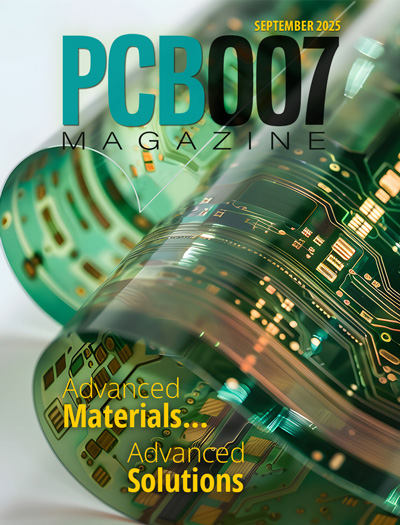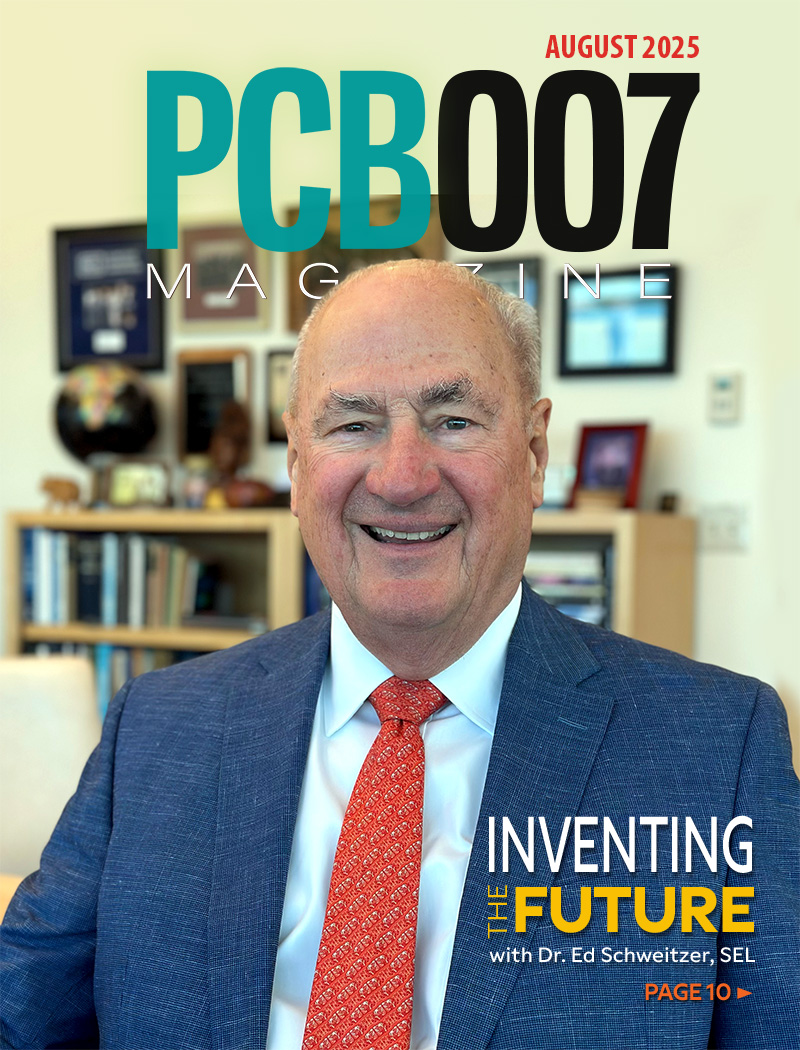-

- News
- Books
Featured Books
- pcb007 Magazine
Latest Issues
Current Issue
Advancing the Advanced Materials Discussion
Moore’s Law is no more, and the advanced material solutions to grapple with this reality are surprising, stunning, and perhaps a bit daunting. Buckle up for a dive into advanced materials and a glimpse into the next chapters of electronics manufacturing.

Inventing the Future With SEL
Two years after launching its state-of-the-art PCB facility, SEL shares lessons in vision, execution, and innovation, plus insights from industry icons and technology leaders shaping the future of PCB fabrication.

Sales: From Pitch to PO
From the first cold call to finally receiving that first purchase order, the July PCB007 Magazine breaks down some critical parts of the sales stack. To up your sales game, read on!
- Articles
- Columns
- Links
- Media kit
||| MENU - pcb007 Magazine
Estimated reading time: 13 minutes
Conversations with...HSIO President Jim Rathburn
Rathburn: We were fortunate to have leading-edge customers who helped us define architectures needed for next-generation silicon. We also had a blank slate with an empty facility without legacy equipment that provided an opportunity to implement technology and capabilities beyond replicating currently available product. We did not want to be a “me too” company that produces what everyone else does. We also had the luxury of focus where the battle between production orders versus research and development of new technologies allowed us to take a different approach, while keeping in mind leveraging existing industry infrastructure. We worked with multiple partners that currently produce conventional circuits to provide opportunity for them to advance beyond commodity fabrication, with the support of material and plating suppliers to combine the best mix of design and production.
Beaulieu: This will be ideal for high-speed circuit fabrication.
Rathburn: Yes, the technology has proven to be a significant improvement over conventional fabrication with higher density and tighter control of the signal channel. One customer stated the approach is “an RF dream” and was able to test samples to validate performance.
Beaulieu: What are the plans for this technology?
Rathburn: We are not a circuit production shop. We are working with existing circuit fabrication companies that have the infrastructure to enable appropriate volume production availability in the flex circuit, rigid PCB, and package substrate markets. All of our high-speed socket and connector customers mate those products with a circuit of some kind, and can benefit from the high-performance circuit production. Many circuit customers may benefit from our socket and connector products by having the option to plug chips that are normally soldered to the circuit into a socket that has the same footprint as the package. In general, we plan to enable availability from multiple sources at the cost and volume to meet customer needs.
Beaulieu: So you're going to license it to existing board shops? How are you going to go about marketing this process?
Rathburn: Our current plan is to filter opportunities that are appropriate to the various production capabilities. We will license multiple circuit fabrication companies as needed to produce designs that we sell direct to end users, if possible bundled with connector and socket products that are appropriate to the application. We will also extend availability in a main stream fashion deployed to baseline circuit builds in the general market. An excellent example we are working on with a leading test equipment supplier is illustrated below where a silicon validation effort tuned for high-performance combines the base PCB, BGA sockets, and connector/cable interfaces to test equipment. The system level approach provides the best available signal performance from the silicon all the way to the test equipment.
Beaulieu: How about their customers? In what ways will they benefit from this?
Rathburn: The benefit to the supplier’s customers is they will have enabled production availability of very high speed, fine line and space multilayer rigid PCBs, flex, and package substrates with performance and density not typically available in conventional methods or domestic supply. Again, the adoption model is to replicate an existing design that may be 75 micron lines and spaces for validation, where the customer will see a significant improvement in performance compared to the existing design built with traditional pcb fabrication methods. Then we provide an instant path to 50 or 25 micron lines and spaces for example with higher routing density and potential layer count reduction. This adoption method makes it fairly easy to compare an existing design made with conventional construction to the new LCP construction. The follow-on issue once the performance is proven, is where can the customer buy production level circuits today with guaranteed supply in the future. Once the design rules are adopted, we want them to think of HSIO as the company of choice.
Beaulieu: So you will be teaching shops how to implement the process, correct?
Page 3 of 4
More Columns from It's Only Common Sense
It’s Only Common Sense: If You’re Not Differentiated, You’re DeadIt’s Only Common Sense: Stop Whining About the Market—Outwork It
It’s Only Common Sense: Pricing PCBs? It’s All in Their Heads
It’s Only Common Sense: Sales Strategies for a Virtual World
It’s Only Common Sense: Storytelling That Sells—Stop Pitching, Start Painting Pictures
It's Only Common Sense: The Evolution of Prospecting
It's Only Common Sense: Leveraging AI in Your Sales Strategy
It’s Only Common Sense: 20 Lessons in 20 Years—A Career in Common Sense


